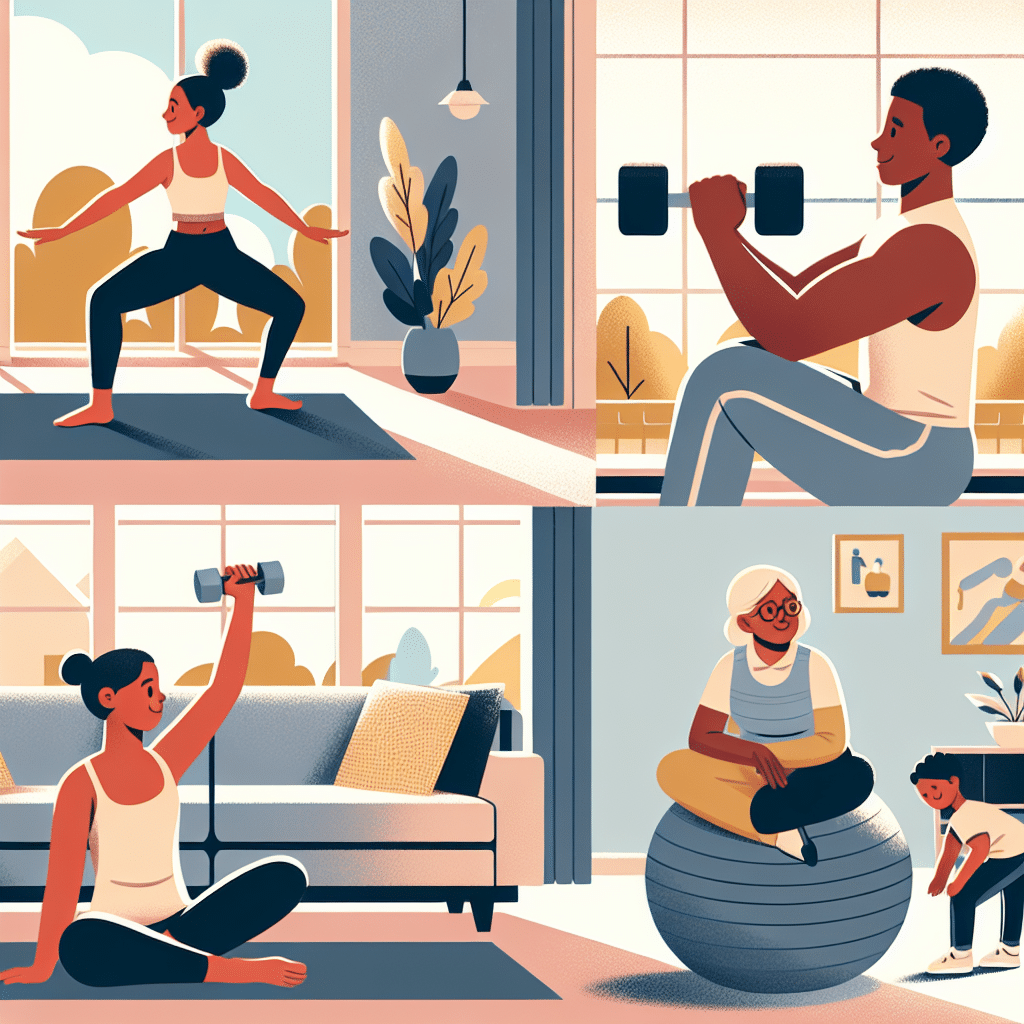Beginner Home Workout for Overall Fitness
Understanding Overall Fitness
Overall fitness encompasses several aspects, including cardiovascular endurance, muscular strength, flexibility, and body composition. It’s crucial for maintaining a healthy lifestyle, enhancing mobility, and preventing chronic diseases. For beginners, starting a workout regimen at home can be both convenient and effective. Below is a structured guide for a beginner-friendly workout that targets these essential fitness components.
Setting Up Your Home Workout Space
Before you dive into your workout, create a conducive environment. Look for a space with enough room to move freely. Ensure good lighting and minimal distractions. Essential equipment for beginners may include:
- Yoga mat: Provides cushioning and support.
- Dumbbells: Versatile weights for strength training.
- Resistance bands: Great for building strength and improving flexibility.
- Water bottle: Stay hydrated throughout your session.
Key Components of Your Workout
-
Warm-Up (5-10 minutes)
Warming up prepares your body for exercise by increasing blood flow to muscles. A proper warm-up should include dynamic stretches and mobility exercises. Here are some effective warm-up moves:- Arm Circles: Stand tall and extend your arms to the sides. Make small circles, gradually increasing the size.
- Leg Swings: Hold onto a wall for balance and swing one leg forward and backward, then switch.
- Torso Twists: Stand with feet shoulder-width apart and twist your torso from side to side.
-
Cardiovascular Exercises (15-20 minutes)
Incorporating cardiovascular exercise is vital for heart health and burning calories. Aim for 150 minutes of moderate aerobic activity each week. For beginners, here are some easy-to-follow options:- Brisk Walking or Jogging in Place: Start with a brisk walk. If you are comfortable, transition into jogging in place.
- Jumping Jacks: Perform in sets of 30 seconds. This full-body movement elevates your heart rate.
- High Knees: Run in place while bringing your knees up to waist height.
-
Strength Training (20-30 minutes)
Strength training builds muscle mass, boosts metabolism, and enhances bone density. Beginners should focus on bodyweight exercises before incorporating weights. Here’s a sample routine:- Bodyweight Squats (3 sets of 10-12 reps): Stand with feet hip-width apart. Lower your hips down and back, ensuring knees do not go past your toes.
- Push-Ups (3 sets of 6-10 reps): Start in a high plank position. Lower your body while keeping your elbows close to your sides. Modify by doing them on your knees if necessary.
- Lunges (3 sets of 10-12 reps per leg): Step forward, lowering your back knee toward the ground. Switch legs.
- Plank (3 sets of 20-30 seconds): Hold a plank position on your elbows and toes, keeping a straight line from head to heels.
-
Flexibility and Cool Down (5-10 minutes)
Cooling down is essential to reduce muscle tension and promote flexibility. Incorporate static stretching:- Hamstring Stretch: Sit on the floor with legs extended. Reach for your toes.
- Quadriceps Stretch: Stand on one leg, grabbing the ankle of the opposite leg.
- Shoulder Stretch: Bring one arm across your body and hold with the opposite arm.
- Child’s Pose: Kneel down, sit back on your heels, and reach your arms forward on the mat.
Progression and Consistency
To progress effectively, gradually increase your workout’s intensity. Add variety every four to six weeks, like incorporating new exercises or increasing weights. Consistency is key—aim to work out at least three times a week.
Tracking Your Progress
To maintain motivation, track your workouts. Keep a journal or use fitness apps to log exercises, sets, and repetitions. Monitoring progress helps identify areas for improvement, reinforces accountability, and promotes a sense of accomplishment.
Nutrition and Hydration
Exercise is only one part of the equation. Nutrition plays a vital role in your overall fitness. Focus on a balanced diet consisting of:
- Lean Proteins: Sources include chicken, fish, beans, and legumes.
- Whole Grains: Brown rice, quinoa, and whole-grain bread should be staples.
- Fruits and Vegetables: Aim to include a colorful variety daily.
- Healthy Fats: Sources like avocados, nuts, and olive oil are beneficial.
Additionally, staying hydrated is essential; aim for at least eight 8-ounce glasses of water a day, adjusting based on activity levels.
Sample Weekly Workout Schedule
For a balanced approach, consider the following weekly plan:
- Monday:
- Cardio + Strength Training
- Tuesday:
- Active Rest (light walking or yoga)
- Wednesday:
- Strength Training + Flexibility
- Thursday:
- Cardio + Core Work
- Friday:
- Strength Training
- Saturday:
- Fun Activity (hiking, cycling)
- Sunday:
- Rest and recovery
Listening to Your Body
As a beginner, it’s crucial to listen to your body and not push through pain. Discomfort is normal, but sharp pain indicates a need for rest. Modify exercises according to your level and make sure to enjoy the process of building your fitness.
Final Tips for Success
- Set realistic goals that motivate you.
- Surround yourself with supportive individuals, whether friends or online communities.
- Celebrate small victories, such as achieving a new rep count or feeling more energetic throughout the day.
By adhering to this beginner home workout plan, you’ll set a solid foundation for overall fitness. The journey toward better health is a lifelong commitment, and every step forward counts, both in and out of the gym.
